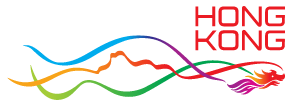LCQ16: Mobile applications to assist with travel for persons with disabilities
******************************************************************************
Question:
Regarding mobile applications to assist with travel for persons with disabilities (PWDs), will the Government inform this Council:
(1) which funded projects under the current government funding schemes for software and application development are related to assistance with barrier-free travel for PWDs (set out in a table);
(2) of the Government's plans (e.g. provision of funding support) in place to integrate, enhance and link up existing mobile applications that assist with barrier-free travel for PWDs, so as to optimise the use of resources and enable such applications to more effectively serve PWDs; and
(3) given that since 2020 the Lands Department has been developing a set of 3D Digital Map with functions including provision of barrier-free route planning for people with different commuting needs, how the Government promotes the best use of such digital map among the public and private sectors and identifies access points in need of improvement, so as to lay down a foundation for future improvement and update of the relevant software and hardware (e.g. the relevant mobile applications and barrier-free facilities)?
Reply:
President,
The Government is committed to providing appropriate support and assistance to persons with disabilities in need so as to facilitate their travel and help them fully integrate into the community. Having consulted the relevant bureaux, I set out below a consolidated reply to the Member's question –
(1) Both the Smart Traffic Fund and the Social Innovation and Entrepreneurship Development Fund set up by the Government have provided funding for projects that assist barrier-free travel for persons with disabilities. Information on the relevant projects is at Annexes 1 and 2 respectively.
(2) Regarding the mobile applications developed by the Government, the Digital Policy Office has promulgated the "Practice Guide for Developing Mobile Apps", requiring bureaux/departments (B/Ds) to conduct regular reviews after launching mobile applications, and to update and consolidate existing mobile applications in a cost-effective manner.
For instance, in 2016, the Lands Department (LandsD) launched a mobile application "VoiceMapHK", which is specifically designed for the visually impaired, providing audio output that reads out information about nearby locations on the map. The visually impaired can also make use of the voice function of their mobile phones to issue commands, and the application will respond by reading out the corresponding results. To optimise the use of resources, the LandsD plans to integrate the functionalities of the "VoiceMapHK" into the GeoInfo Map, another map application under its management. With the launch of the "iAM Smart" mini-program platform later this year, all B/Ds must consider to prioritise migrating their mobile applications or integrating the core functions into the "iAM Smart" platform, so that members of the public can easily access the required application services without the need to download additional applications, thereby enhancing the consolidation of Government mobile applications.
In addition, in 2021, the Development Bureau (DEVB), with the support of various non-governmental organisations, the MTR Corporation Limited and some iconic shopping malls in Kowloon East, developed a "Smart Navigation Tool for The Visually Impaired/People in Need" Proof-of-Concept, providing barrier-free navigation experience. This tool utilises indoor maps to provide indoor and outdoor seamless navigation, which helps users easily navigate and interact with the environment, and increases their independence and mobility. In January 2023, this tool was incorporated into the "MyKE" mobile application as the "Walking Assistant" function. The DEVB will continue to explore scaling up this Proof-of-Concept to cover more areas, so as to enable those in need to commute more freely.
In response to the recommendations of the Equal Opportunities Commission on enhancing the overall accessibility of Hong Kong, the Transport Department has also enhanced the function of accessible route option of the mobile application HKeMobility since April 2024 by expanding the accessible route option from walking mode to public transport mode. When members of the public choose to travel by public transport, the HKeMobility can plan routes with visual aids or mobility aids to enable the public to identify barrier-free accesses (such as locations of lifts, ramps and footbridges) along the way to transport stations, so that persons with disabilities can plan their journeys more efficiently and travel on their own.
In addition, the Hong Kong Observatory (HKO) has been actively pursuing web accessibility design over the years. The HKO's in-house developed mobile application "MyObservatory" has already incorporated guidelines on accessibility features and functions, including screen reader compatibility, alternative texts for images and selectable font size, so as to facilitate all sectors of the community (including persons with disabilities) to browse the "MyObservatory" to get the latest weather conditions before traveling. The HKO will continue to incorporate accessibility features and functions in the mobile application, providing enhanced weather services.
(3) The LandsD and the Spatial Data Office (SDO) of the DEVB have been promoting the application of 3D Digital Map to public and private organisations through various channels (such as public talks and workshops), to highlight the development opportunities it brings. As a key component of the 3D Digital Map, the 3D Pedestrian Network provides a wealth of useful information, such as road names, gradient and length of road sections, distribution of en-route obstacles and opening hours of public lifts, as well as wheelchair accessibility data at entrance to government facilities and public lifts. This enables barrier-free route planning for people with different commuting needs. The LandsD and the SDO of the DEVB will continue to engage with various stakeholders (including social welfare organisations and groups serving persons with disabilities), communicate with relevant public and private organisations based on stakeholder needs, promote cross-agency information exchange and collaboration, and jointly optimise the 3D Pedestrian Network to enhance the convenience of public mobility.
Ends/Wednesday, July 16, 2025
Issued at HKT 11:23
Issued at HKT 11:23
NNNN




